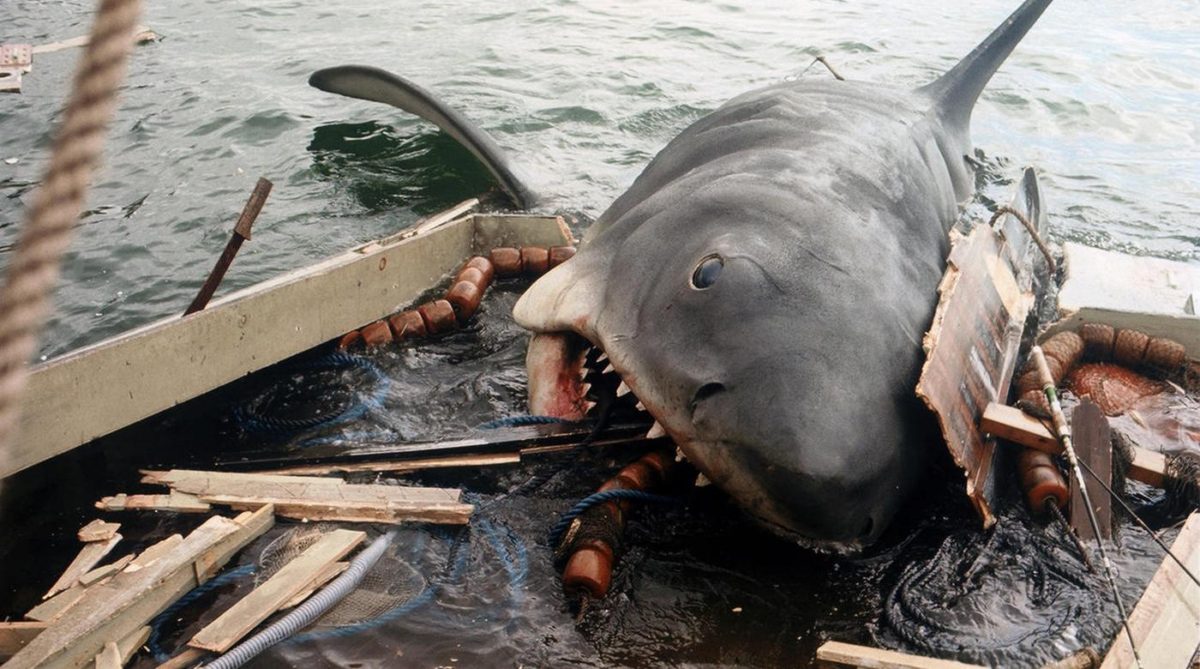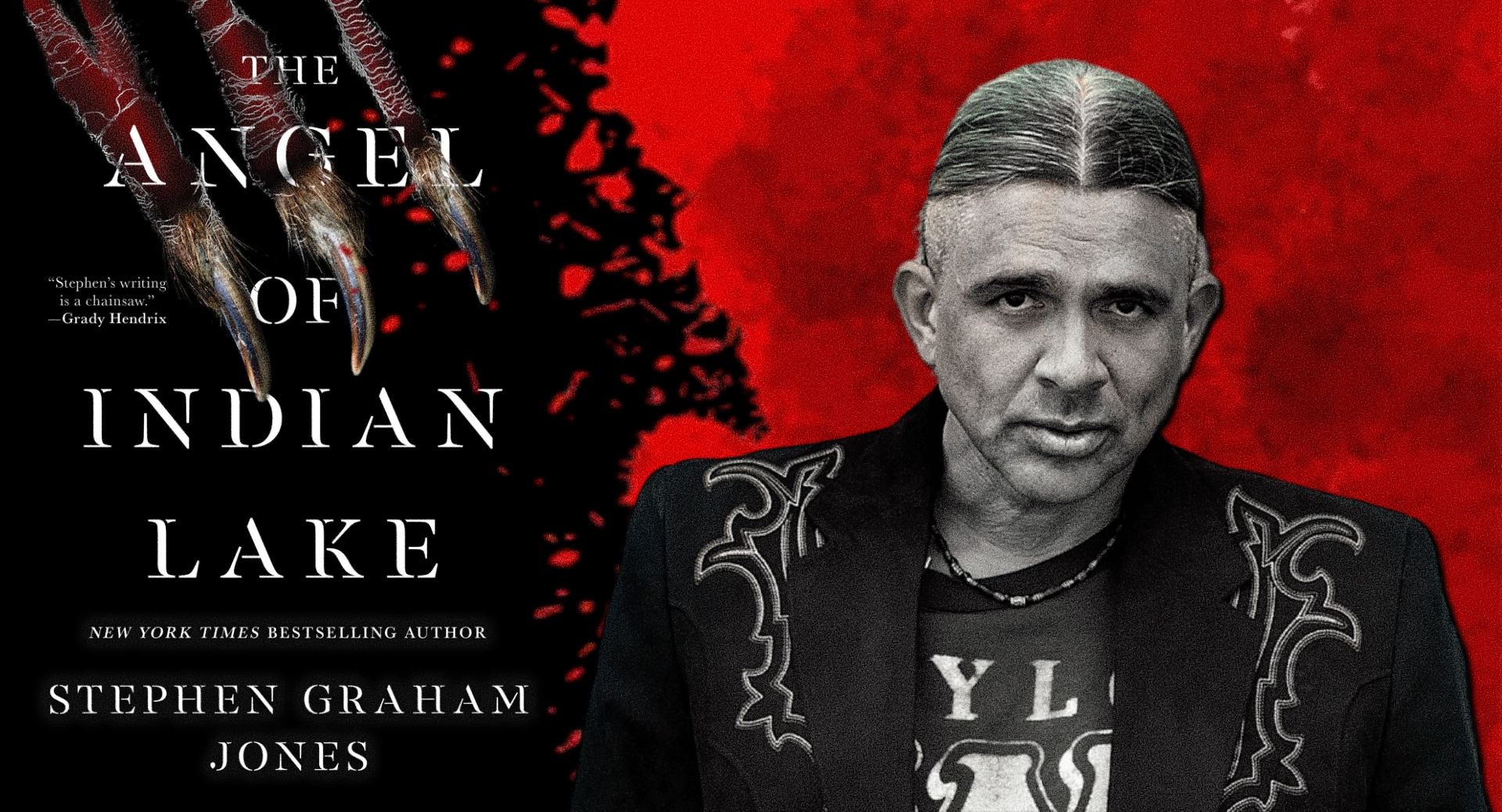Sponsored
‘Jaws’ and the History of Shark Horror

Johannes Roberts’ 47 Meters Down: Uncaged, his follow up to 2017 sleeper hit 47 Meters Down, is swimming into theaters on August 15. Looking far more terrifying and meaner than its predecessor, Uncaged promises to perpetuate that long-running fear of sharks as it ups the ante on the horror in a massive way. This time, four friends on a scuba trip to an underwater city are forced to fight for their lives when they find themselves trapped in a claustrophobic submerged cage system. Based on premise and trailer alone, 47 Meters Down: Uncaged looks unlike any shark horror film we’ve seen before. Think The Descent meets Jaws. Ahead of its arrival in theaters, we look back at the history of shark horror.
Steven Spielberg’s Jaws left an indelible mark on cinema upon release in 1975. It didn’t just instill a fear of going into the water, but it essentially birthed the summer blockbuster as we know it. The Fourth of July weekend-set movie that sees an unlikely trio team up to save the coastal town of Amity from a man-eating shark set a major precedent for killer shark horror movies, and became synonymous with summertime horror viewing. Even though Jaws became the de factor killer shark horror movie, inspiring a wave of copycats in its wake, there’s a lot more history behind shark horror than that.
Who could forget Quint’s riveting speech late in Jaws, where he reveals he survived the sinking of the USS Indianapolis? Quint might be a fictional character played memorably by Robert Shaw, but his story was steeped in historical fact. The naval ship really did sink on July 30, 1945, sending roughly 300 of the 1,165 crew down with the ship. Many of the remaining crew were cast adrift, left to contend with exposure, dehydration, and a serious number of shark attacks – the most attacks on humans in history. Jaws wasn’t the first film to reference the attack, either.
The Sharkfighters, a 1956 action film, uses the sinking as a starting point for its narrative. Lt. Commander Ben Staves (Victor Mature) is recovering from the sinking of his destroyer and the loss of many crew members to sharks when he’s reassigned to Project Shark Chaser in Cuba during WWII. It’s a Navy research project whose sole purpose is to develop a shark repellent for serviceman stranded in shark-infested waters. Director Jerry Hopper insisted upon using real shark footage, instead of fakes, and this shark attack feature also has the unfortunate distinction of a death on set; special makeup effects artist Richard Shearman died from a shark attack while filming underwater scenes for the movie.
From there, the shark attack landscape was pretty sparse, and often shlocky. 1966’s Batman saw the caped crusader using shark repellent on a rubber shark, and 1969’s Shark! featured Burt Reynolds as a gunrunner propositioned to dive into shark-infested waters by treasure hunters. A stuntman, Jose Marco, was killed on camera by a shark during production, and it was repulsively used as marketing to sell tickets.
Of course, everything changed with Jaws. The massive financial juggernaut meant a feeding frenzy for studios trying to get in on the shark action, and of course the inevitable sequel; Jaws 2. There were the blatant ripoffs, like Mako: The Jaws of Death and Great White. And the films that spun off from the killer shark concept, like Orca.
The ‘80s was dominated by two additional Jaws sequels with diminishing returns, Jaws 3-D and Jaws: The Revenge, and Italian shark attack features like Deep Blood and Night of the Sharks. The latter, like many of the international ripoffs, didn’t have nearly the same Hollywood budget, and therefore didn’t really have the capability to use animatronic sharks or even actual shark footage. Many just interjected nature clips of sharks or used obvious rubber toys. Eventually, due to the dwindling box office numbers, shark attack horror films started to wane.

Until 1999, that is.
Thanks to the advances in visual effects and computer technology that was changing how movies were being made, a new entry in shark horror would begin the feeding frenzy again. Renny Harlin’s Deep Blue Sea, featuring a group of scientists stranded on an oceanic research station fending off the intelligence-enhanced Mako sharks they created, doesn’t get enough credit for changing the niche subgenre. The big-budgeted action-horror opened up new possibilities of what shark horror could be. And how often the sharks could be shown. Which meant things often got weird in the new century.
SyFy originals that merged sharks with anything you could possibly conceive, from tornadoes to octopi, appeared in quick succession. Sharknado, Sharktopus, Mega Shark, Ghost Shark, and countless others that capitalized on low budget CG and shlocky entertainment. SyFy even gave the killer shark a holiday filled twist with 2018’s Santa Jaws. On the big screen, sharks more recently went epic and prehistoric with The Meg, a mostly toothless and loose adaptation of Steve Alten’s novel that pit the megalodon against Jason Statham. Or they attacked in a flooded grocery store post-tsunami, like Bait. Sometimes they simply invaded weekend getaways at the lake, as in Shark Night. The latter two might have been scaled back in scope, but they capitalized on the gimmicks in a big way with 3D.

If shark movies weren’t going over the top, they were paired down for simple realism. 2003’s Open Water followed a couple stranded at sea after a diving tour miscount, leaving them to slowly succumb to circling sharks. 2010’s The Reef took a chilling, realistic approach to Great Whites stalking a crew stranded at sea after their boat capsizes. Jaume Collet-Serra opted for simplicity in his surfer-versus-aggressive-shark film The Shallows, and Johannes Roberts delivered a major sleeper hit in 47 Meters Down, along with one of the most terrifying jump scares in recent years, thanks to a cage dive gone wrong. Its sequel, 47 Meters Down: Uncaged is poised for a repeat this summer.
Throughout the decades, one thing is clear; people will show up for shark horror. Jaws was the first to make people truly take notice, but whether it’s cable movies that garner endless sequels or quiet theatrical releases that take the box office by surprise, we can’t get enough of sharks. They are truly the official horror icon of summer.
47 Meters Down: Uncaged dives into theaters on August 16, 2019.

Podcasts
Stephen Graham Jones on Final Girls, Small Town Horror, and ‘The Angel of Indian Lake’ [Podcast Interview]

What does it mean to be a final girl? Can it really be as straightforward as staying alive until the sun rises? Picking up the knife, the machete, the abandoned gun and putting down the killer? Or is it something more? Could it mean stepping into a position of power and fighting for something larger than yourself? Or risking your life for the people you love? Could it be that anyone who bravely stands against an unstoppable force has final girl blood running through their veins?
Jennifer “Jade” Daniels has never seen herself as a final girl. When we first meet the teenage outcast in Stephen Graham Jones’ My Heart is a Chainsaw, she’s lurking on the fringes of her her small town and educating her teachers about the slasher lore. She knows everything there is to know about this bloody subgenre, but it takes a deadly twist of fate to allow the hardened girl to see herself at the heart of the story. In Don’t Fear the Reaper, the weathered fighter returns to the small town of Proofrock, Idaho hoping to heal. But a stranger emerges from the surrounding woods to test her once again. The final chapter of this thrilling trilogy, The Angel of Indian Lake, reunites us with the beloved heroine as she wages war against the Lake Witch for the soul of the town. She’ll need all the strength her many scars can provide and the support of the loved ones she’s lost along the way.
Today, Shelby Novak of Scare You to Sleep and Jenn Adams of The Losers’ Club: A Stephen King Podcast sit down to chat with the award-winning author about the concluding chapter in his bestselling Indian Lake trilogy. Together they discuss the origins of Jade’s beloved nickname, life in a small town, complicated villains, and all those horror references that made the first two novels fan favorites. Jenn reveals how many times she cried while reading (spoiler: a lot), Shelby geeks out over the novel’s emotional structure, and all three weigh in on their favorite final girls and which entry is the best in the Final Destination franchise.
Stream the heartfelt conversation below pick up your copy of The Angel of Indian Lake, on bookshelves now. Bloody Disgusting‘s Meagan Navarro gives the novel four-and-a-half skulls and writes, “Proofrock has seen a copious amount of bloodshed over three novels, but thanks to Jade, an unprecedented number of final girls have risen to fight back in various ways. The way that The Angel of Indian Lake closes that loop is masterful, solidifying Jade Daniels’ poignant, profound legacy in the slasher realm.”














You must be logged in to post a comment.